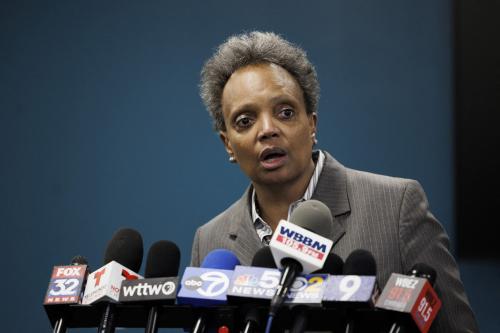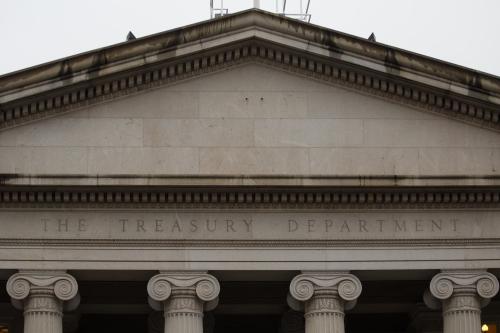For several decades the president’s budget has been described as “dead on arrival” in Congress, with both budget watchers and members of Congress alike describing it as such since at least the mid-1980s. This week, President Biden released his budget for fiscal year 2024, and the reaction from GOP House members was no different.
In spite of Republican pledges to pass individual spending bills this year, narrow majorities and high polarization in both chambers mean conditions are, once again, ripe for temporary continuing resolutions and/or an omnibus spending package at year’s end. Divided government also presents a major obstacle to action on some of the proposals in the president’s budget, like universal pre-kindergarten for four-year-olds, guaranteed paid family and medical leave, an expanded child tax credit, and expanding aid for community college students; indeed, Democrats struggled to enact some of these initiatives when they enjoyed unified party control of Washington during Biden’s first two years in office.
That does not mean, of course, that preparing and releasing it is a waste of time and resources. Within the executive branch, developing the proposal requires making strategic choices and navigating tradeoffs across priorities, and the material drafted by agencies as part of the budget’s preparation can serve as an important input into Congress’s ultimate agreement on appropriations. But the president’s budget proposal — especially under divided government — should not be thought of as the basis for a comprehensive, actionable legislative program.
Our expectations about the prospects for specific agenda items in the president’s budget should be low, but the overall shape of the document — and its analogue from House Republicans, expected in the coming weeks — may help bring some contours of the coming negotiations to raise the nation’s borrowing limit into focus.
“Fundamentally, raising the debt limit is about ensuring the United States has the ability to meet the commitments Congress has already made through tax and spending legislation, going back many decades.”
President Biden’s budget, for example, outlines new sources of revenue, including a new minimum tax on households worth more than $100 million and an increase in the tax rate on stock buybacks, and a proposal to save federal dollars by expanding Medicare’s ability to negotiate directly the cost of certain prescription drugs. The forthcoming proposal from the House GOP, meanwhile, is expected to include large cuts to not just discretionary spending programs like foreign aid and housing vouchers, but also potentially new work requirements for individuals who qualify for food assistance and other changes designed to make federal benefits harder to access.
Fundamentally, raising the debt limit is about ensuring the United States has the ability to meet the commitments Congress has already made through tax and spending legislation, going back many decades. The consequences of not addressing the debt ceiling are far greater than those incurred during the “government shutdowns” that occur when Congress fails to act on annual appropriations bills before they expire. While raising the debt limit should be a routine task for Congress, increasingly, it has not been — and agreements to do so have often involved new legislation that seeks to reduce future deficits.
This year, Democrats are unlikely to accept spending cuts of the magnitude that the GOP proposal will lay out, and Republicans similarly won’t agree to sizable tax increases. But the respective budget proposals, taken as any indication of the parties’ opening positions, are consistent with one of the greatest challenges in resolving the debt limit standoff. Democrats are not interested in a repeat of the hostage taking by Republicans that drove the country to the brink of default in 2011, when Republicans held out for implausibly large spending cuts in exchange for votes on increasing the debt limit. Republicans, meanwhile, see the agreement that ended the 2011 standoff as one of their most successful efforts at cutting spending in recent decades.
In the end, any deal to address the debt limit will require all involved being able to save some face — not just House Republicans and the White House, but also pivotal senators like Joe Manchin (D-W.V.), who has said that Democrats will have to “meet [McCarthy] halfway” in the end. But what a face-saving deal would look like remains elusive. This week, House Republicans began considering legislation that would direct the Treasury Department as to which payments should be made first in the event that the government does not have enough cash on hand to cover its bills — but Treasury Secretary Janet Yellen has questioned the feasibility of this option.
All signs point towards a difficult road ahead.
The Brookings Institution is committed to quality, independence, and impact.
We are supported by a diverse array of funders. In line with our values and policies, each Brookings publication represents the sole views of its author(s).








Commentary
The president’s budget and the battle ahead
March 10, 2023